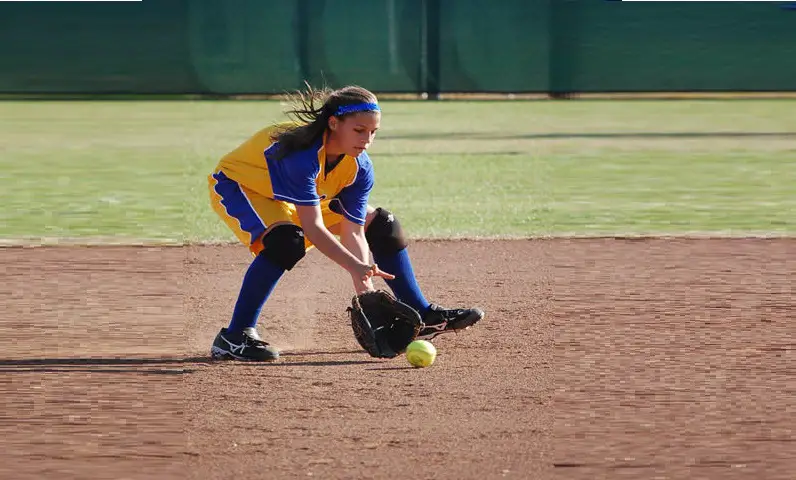
There are basic steps that make softball games simpler to manage and to make execution automatic during a play. Some common softball shortstop tips for example include, middle infielders flow with the batted ball depending on which side of the field it is hit on. When it is hit to the right side of the field, the shortstop moves to the right side of the field. When the ball is hit to the left side of the field, the shortstop stays on the left side to cover second base or back up third base. This might change depending on where there might be runners on base.
Softball Shortstop Tips
When considering fielding for the shortstop, the main reason to be on the balls of the feet in the ready position, is so that she can charge the ball, set and throw with accuracy. Being on the right side of the field, depending on the pitching speed and the abilities of the hitter, the shortstop will receive many of the ground balls. When possible, it is best to attempt to catch and throw in one continuous motion, quickly but accurate. In the transition, use as few steps as possible before throwing.
When making a throw to another infielder, keep the ball in view of the receiver at all times. If the shortstop is throwing to third base, she might use a backhand flip and if she is making a quick throw to second base to start a double play she might use a sidearm throw or underhand toss depending how close she is. If the throw is to home or to first base, it is important to get a good hard throw that gets there quickly. When possible, on a double play, the shortstop should simply step on the bag, pivot or step and make the throw to first herself instead of throwing or tossing it to the second base player at the base. Less contact and throws makes the possibility of success greater.
Communicate with the other infielders through the game. It is important to be sure who is taking the second base for example on a play as well as letting the third base player know there is coverage on a pick off play. The team or coach will set who takes the throw on a pick off but it might depend on weather or not there are other runners on base and a bunt is expected.
Shortstop would generally cover second on a double play throw from the pitcher or catcher unless there is a runner at third base. There may be a procedure set by the coach depending on the abilities of the infield. if there is a bunt situation for example, the third base player may have to go in to pick it up. this means that the shortstop needs to be at third so the second base player would then cover second for the double play. Some would have the Shortstop cover regardless. This would be a team set play.
Make sure the shortstop practices different double play footwork so that she does not use the same execution every time there is a double play. A good baserunner will make a note of the pivot if it is always the same, and have additional information in evading the tag. Vary the double play pivot used so that the runner will have difficulty guessing where to slide safely or to break up the double play. Consider the accuracy of the throw and the direction of the runners approach.
It is a good idea to practice having an out at first base before the play at second base so that the shortstop does not miss tagging the runner at second when the ball is coming from first base. It is easy to be so used to simply doing the footwork that tagging can be forgotten. Also when there is a runner at second base on a ground ball, be sure to look for a tag on the runner that might be going to third base if there is not a force play at third. The runner on second could look to take advantage of a throw to first if there is no force to third. The shortstop could even practice a fake play to get the runner from second to advance. It would not be a good idea to execute a fake play regularly however because then it would not have the same effect.
Whenever there is an opportunity, it is a good idea for the shortstop to spend time with the second base player practicing double plays. The more they are aware of each others tendencies, and the more they work on the coverage together, the better the execution will be during competition. Most teams do not spend a large amount of time on double plays specifically. During a small group practice would be a perfect opportunity for this type of activity.

